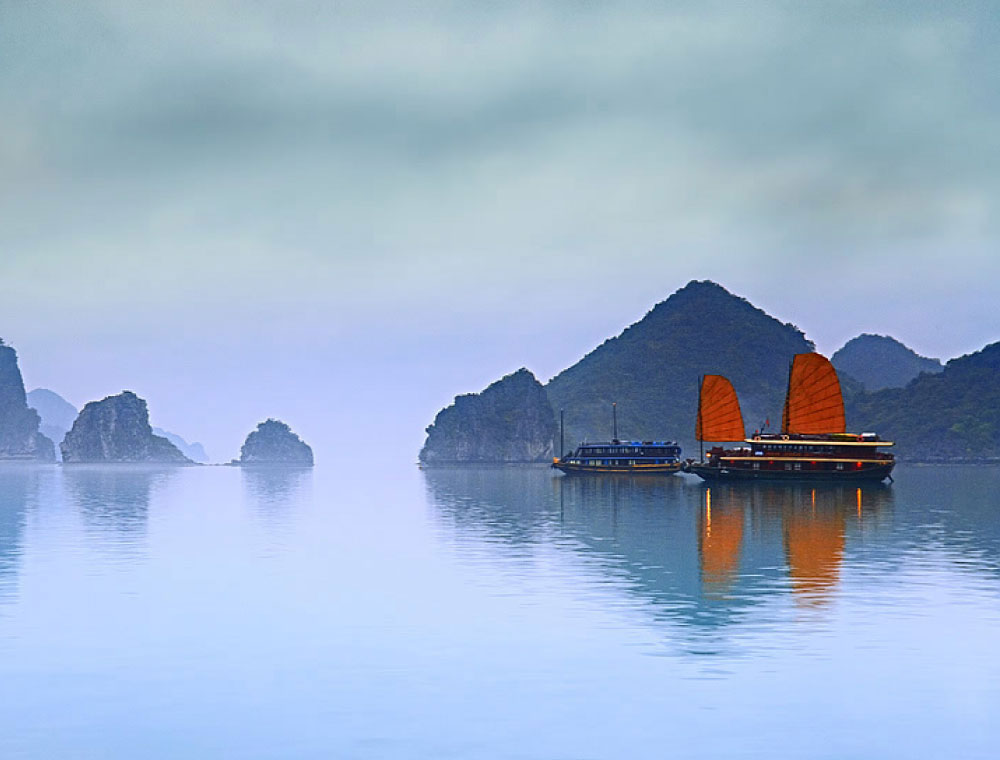THIEN CUNG
Situated in the north of Dau Go island, Thien Cung is one of the most charming grottos in Halong Bay. Its structure is a complex with different levels and chambers, which contain richly ornamented stalactites and stalagmites formed millions of years ago. Come to Thien Cung grotto, visitors can enjoy interesting stories about the shapes of the stalactites and stalagmites closely connected to the Ha Long Bay legend of King Dragon.
DAU GO
Located on Dau Go island, 300m away from Thien Cung grotto, it covers 5,000sq meters and is divided into three chambers. It’s called “Dau Go”, an ancient name, meaning “Wooden Stake”.
The attractive and significant beauty of the cave is its ancient and mossy appearance. The first vaulted chamber is a large hollow, resembling a beautiful opera chamber, with a harmonious combination of paintings and sculptures. The middle and rear chambers of the cave are full of many blocks of pure stalactites blazed and reflected in the numberless coloured rays of the special lighting.
SUNG SOT
Sung Sot is situated on Bo Hon Island where there is a group of caves, 15km away Bai Chay wharf. Boasting as the most beautiful grotto in Ha Long Bay, Sung Sot covers 10,000sq meters and is divided into three chambers. Each chamber has its own beauty which surprises visitors, especially the third chamber, which suddenly widens into a large, curved, vault like, monumental palace. In the “Ha Long Tourism” book published in 1938 by the French, it was referred to as “Surprise Cave” - “Grotto de Surprise”.
